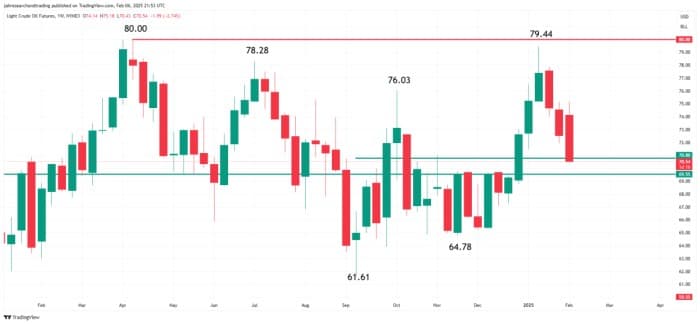Crude oil markets remain under pressure this week as rising U.S. inventories, escalating U.S.-China trade tensions, and demand uncertainties continue to fuel volatility. After an initial rally driven by tariff concerns, prices have struggled to sustain gains, as traders digest the broader economic risks impacting supply and demand fundamentals.
Trump Administration Postpones Canada-Mexico Tariffs, But Trade Risks Persist
The Trump administration has delayed the implementation of new tariffs on Canadian and Mexican energy imports for 30 days, temporarily easing concerns over immediate supply disruptions. The original plan included a 25% levy on Canadian and Mexican oil, alongside a 10% tariff on other energy imports. The postponement provides a window for negotiations, offering refiners some relief from the potential cost increases.
Despite this temporary reprieve, trade tensions remain a major concern. The broader focus has shifted to the U.S.-China trade dispute, which has escalated following China’s decision to impose a 10% tariff on U.S. crude, along with levies on liquefied natural gas (LNG) and coal. This move adds downward pressure to global oil prices, as China is a key buyer of U.S. crude. With economic uncertainty rising, demand expectations continue to weaken, increasing the risk of further price declines.
Surging U.S. Crude Inventories Signal Weak Demand
Oil prices came under additional pressure after U.S. crude stockpiles surged well…

